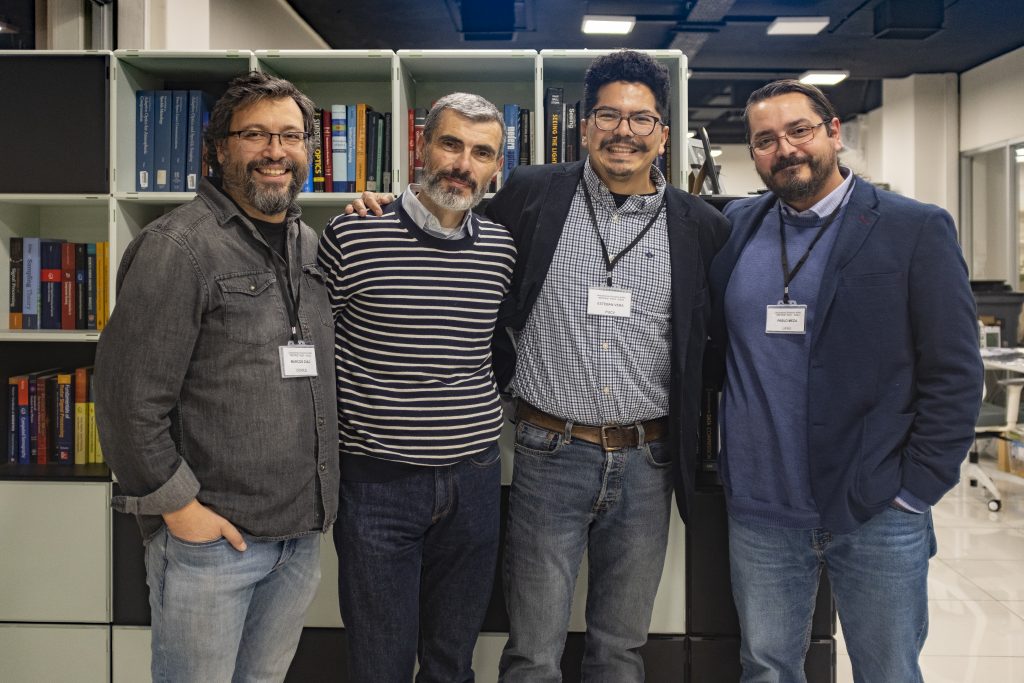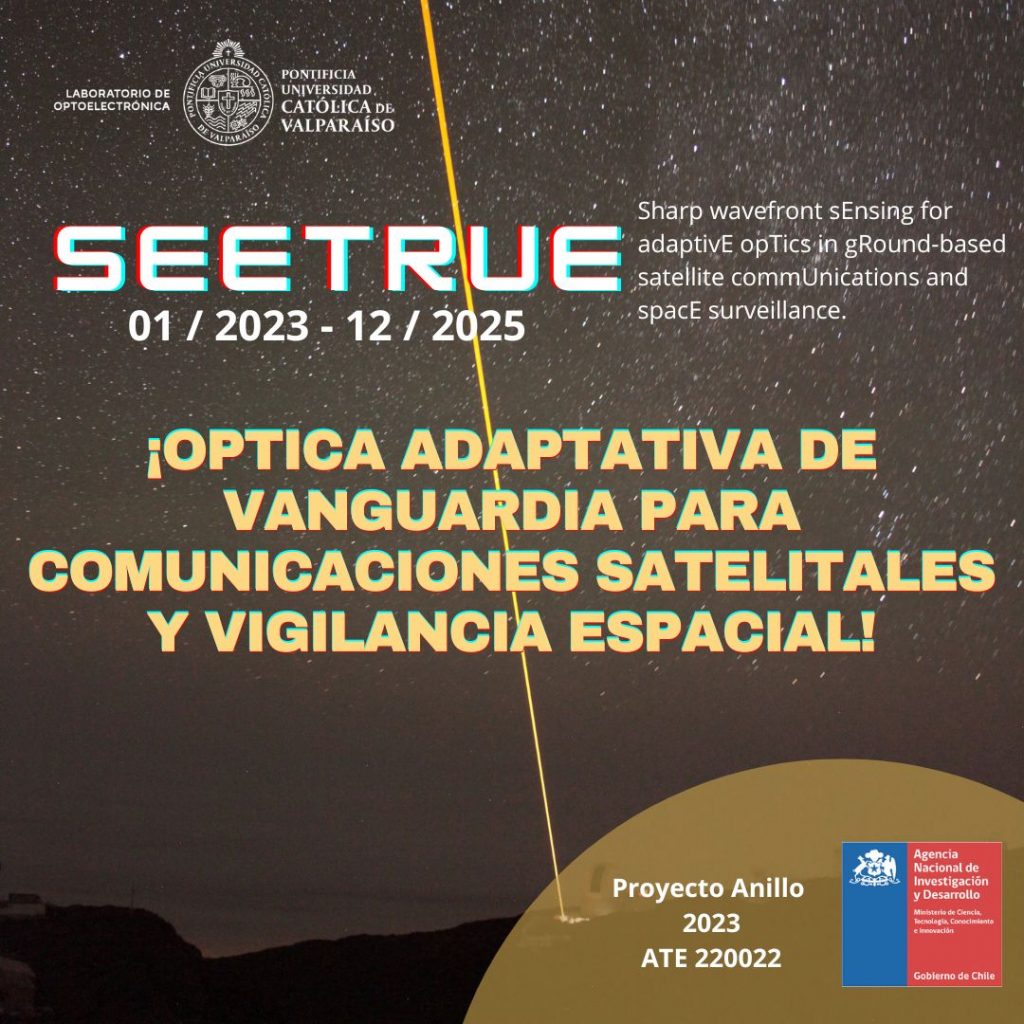Our Optoelectronics Laboratory from Pontificia Universidad Católica de Valparaíso (PUCV) got a new awarded project given by the Agencia Nacional de Investigación y Desarrollo (ANID).
SEETRUE – Sharp wavefront sEnsing for adaptivE opTics in gRound-based satellite commUnications and spacE surveillance is our Proyecto Anillo ATE 220022 that got funding of US $750K awarded by ANID, this project has an initial duration of 3 years, from November 2022 until November 2025.
SEETRUE is an interdisciplinary and collaborative project between several Universities, its director is the leading scientist, professor and head of Optolab, our Optoelectronics Lab, Dr. Esteban Vera from the School of Electrical Engineering and the Co-director is Darío Pérez from the Physics Institute, both at PUCV.
Two other experts collaborate too as principal investigators, the professors Marcos Díaz from Universidad the Chile with his laboratory called SPEL and Pablo Meza from Universidad de la Frontera.

¿What is it about?
The project seeks to use Artificial Intelligence (AI) to achieve compact and low cost adaptive optics solutions for applications of space surveillance and satellite communications.
First of all, it’s important to know that today we are facing a huge problem and that is the big amount of objects and space junk that are orbiting the Earth and that amount keeps going up. Then, it is essential to know what is going on in our sky, but it’s not easy to notice because this objects travel at a high speed.
Besides that, every day many small satellites or CubeSats are being launched into space and it’s necessary to get the information from their cameras and sensors. They could also be used, for example, to communicate from one point of the Earth to another wirelessly. However, the current communication speed provided by the radio waves are very limited.
The option we have left it’s to use communications thought optical waves or lasers, but the phenomenon of atmospheric turbulence complicates the travel of light, both to make images of the satellites and also to communicate with them.
Adaptive optics is a technique that already has been used in Astronomy, that allows to correct the turbulence and get high resolution images of the satellites communicating at a very high speed. However the high cost and complications of this novel technology create the need to look for new and creative alternatives.
¿What would the new solution be?
We are going to use AI technology to design more compact optic systems, that will reduce the cost spend in the expensive optical hardware in exchange for increased computing hardware needs, which are much more affordable.
This is how we will be able to design innovative adaptive optics systems that are compact and cost effective, allowing to massify this technology to get high resolution images of sorrounding satellites and also communicating with them at speeds greater than Terabits per seconds.
Application
The project contemplates the implementation of an Optolab Observatory that will have a robotic telescope of 50 cm to validate experimentally the ideas raised here.
SEETRUE is a very innovative project that will grant huge advances to the study and application of adaptive optics, which complements the efforts that already have been made and the ones that will come in the incipient national spatial development.

